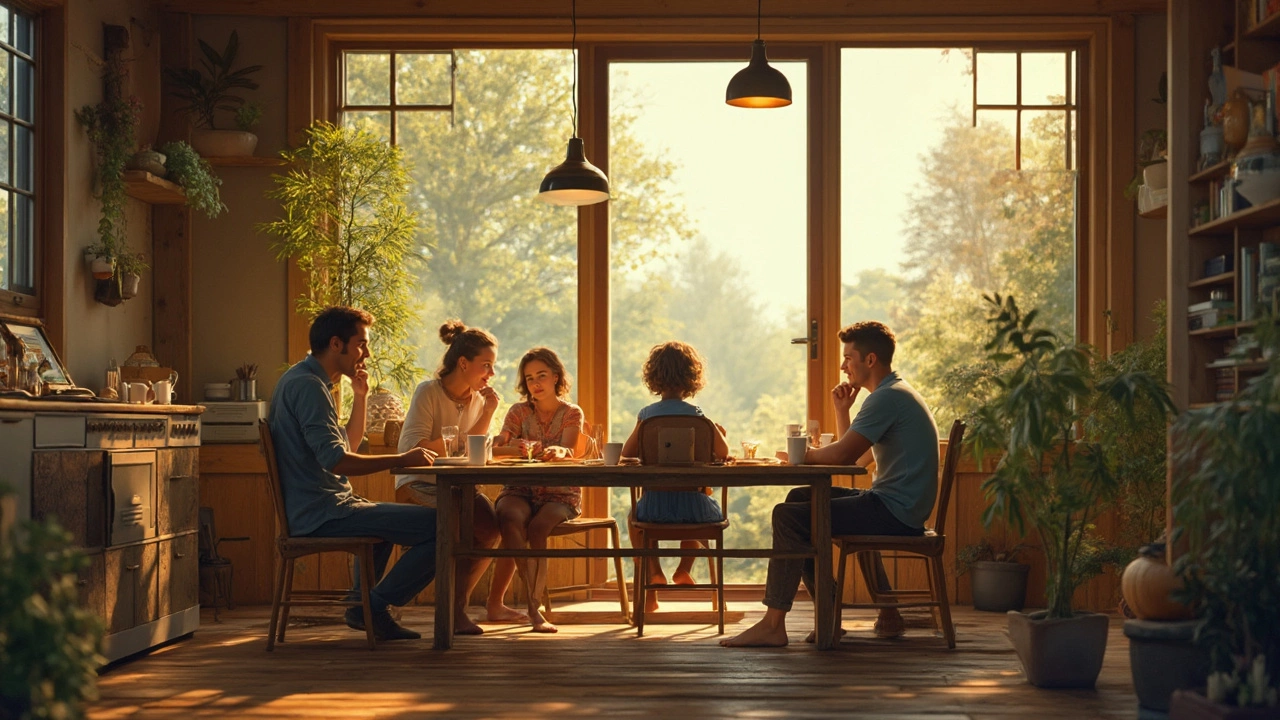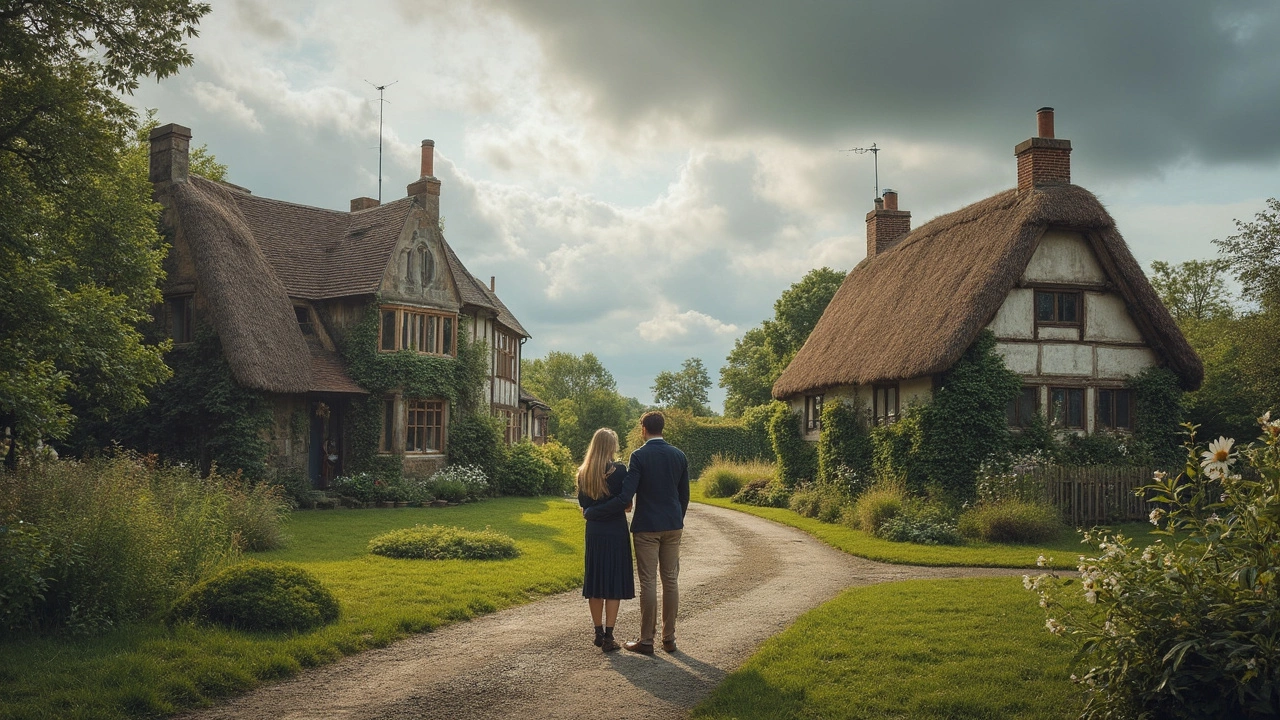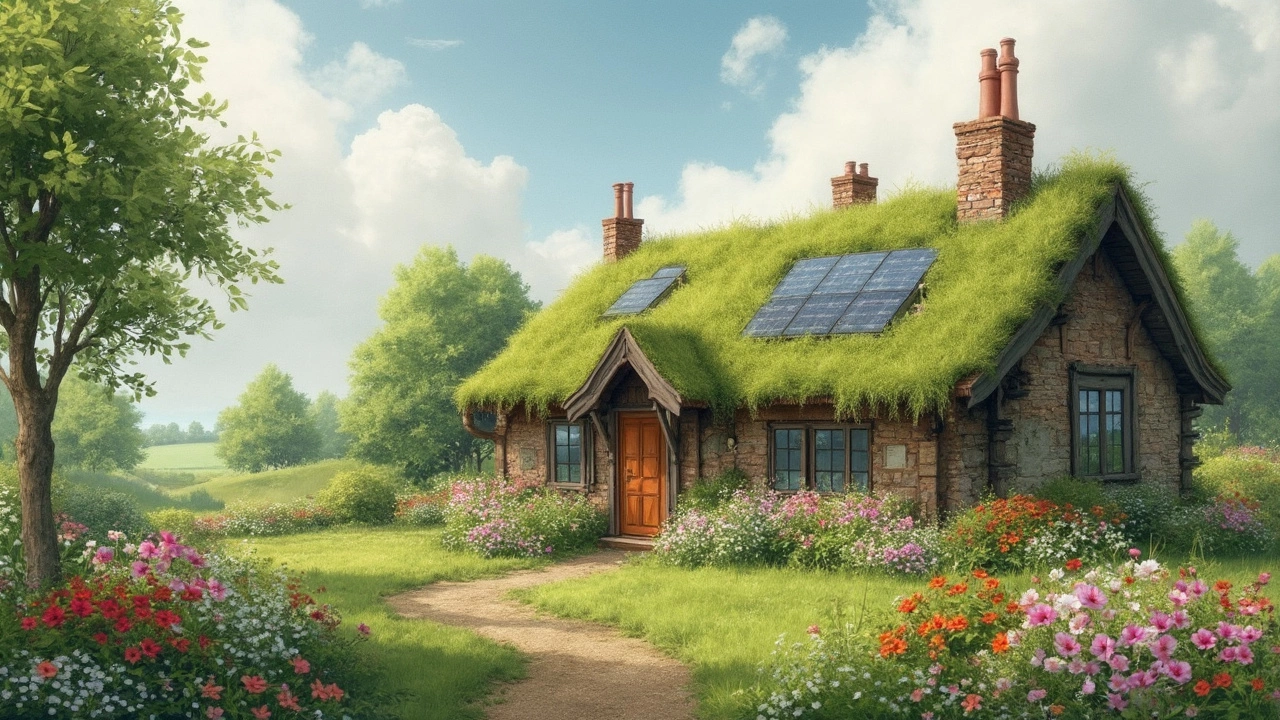So you're thinking about building or buying an eco-friendly cottage? Awesome choice! But before you jump in, let's chat about some of the not-so-glamorous sides of green buildings. It's not all solar panels and rainwater harvesting systems, unfortunately.
First up, let's talk money. Although green buildings can save you dough down the line, they often have a bigger price tag upfront. Those snazzy energy-efficient systems and sustainable materials? Yeah, they cost more to install. So, you'll need to budget more initially to enjoy those sweet savings later.
Next, maintenance. Keeping these cottages in tip-top shape can be a bit of a learning curve. Eco-friendly materials can require special care—it's not like cleaning vinyl siding or your usual hardwood floors. You might find yourself Googling 'how to clean bamboo floors' more than you'd like.
- Higher Initial Costs
- Maintenance and Upkeep
- Health Concerns
- Resale and Marketability
- Navigating Building Codes and Regulations
Higher Initial Costs
Alright, let's get real for a moment. One of the major challenges of green buildings, especially eco-friendly cottages, is the cost to get started. It's kind of like buying a fancy new phone—you pay more upfront to get all those cool features.
The idea is to invest in sustainable technologies and materials that cut down on energy usage and save the planet (and your wallet) in the long run. But initially, you might find yourself staring at a higher-than-expected price tag.
For example, think about the cost of installing solar panels. According to the U.S. Department of Energy, the average cost for installing a residential solar panel system was around $20,000. That's a chunk of change, right? This is often the stepping stone that sets people back even though they can significantly reduce energy bills.
It's not just the tech that drives up the costs. The materials usually have some premium pricing too. Consider low-energy windows, non-toxic insulations, or bamboo instead of traditional wood. All these choices add up, making that first investment seem hefty.
"The initial investment often feels daunting, but it's essential to factor in long-term savings," says Emily Hanson, a sustainable building expert. "Understanding lifecycle costs helps justify the higher initial expenses."
When setting your budget, plan for these costs but also think ahead to how much you'll likely save over time. It's about balancing the now with the benefits down the road.
Here's a pro tip: When budgeting, include a little extra for unexpected expenses. Things like unforeseen site conditions or design changes can sneak up on you when you're least expecting them.
To justify these expenses, many owners find peace knowing they’re contributing less to emissions and using fewer resources, which aligns with their personal values. If that's you, then weighing the costs with environmental and personal benefits could tip the scale in favor of going green.
Maintenance and Upkeep
When it comes to maintaining eco-friendly cottages, you've got to be on your toes. It's not quite the same as just patching up a shingle roof or mowing the lawn. Instead, think about the materials and systems that make your green home unique—they need some special attention.
First, let's chat about materials. Many green buildings use things like reclaimed wood, bamboo, or other renewable materials. Fantastic for the planet, but they may not hold up like, say, your regular timber. You might have to deal with more frequent repairs or replacements. And, if you live in a place with extreme weather, keeping these materials in good shape is key.
For those of you with solar panels or other eco-tech systems, expect a bit of upkeep there, too. While they reduce energy bills, you'll need to clean those panels regularly to keep them efficient. Dust, leaves, snow—yep, you'll either be doing or paying for some extra sweeping. It's definitely a trade-off.
Now, just like demand for these snazzy systems, demand for eco-friendly paints and sealants is growing. But keep in mind these 'green' products can sometimes come with surprises, like not lasting as long or costing more than traditional options. Be ready for some experimenting to see what works best for your home.
If you're thinking, 'No problem, I'll just find someone who knows this stuff,' it's worth noting that finding experts in green building maintenance can be tricky. This niche market isn't flooded with professionals, so you might have to search a bit longer or pay that premium price for the expertise.
For a smoother ride, consider a maintenance schedule. Keep tabs on when things need servicing, cleaning, or replacing. It'll save you from a load of last-minute repairs.
Here's a quick checklist to help you stay on top:
- Regularly inspect and clean solar panels.
- Schedule bi-annual checks for eco-tech systems.
- Monitor the condition of unique materials like bamboo or reclaimed wood.
- Use compatible, eco-friendly cleaning agents.
- Stay informed about new green maintenance techniques and products.
Taking these steps won't just keep your green building running smoothly—it'll also help sustain its environmental benefits, ensuring your eco-friendly investment stands the test of time.

Health Concerns
When diving into the world of green buildings, it's crucial to be aware of the potential health concerns that could crop up. Sure, you're reducing your carbon footprint, but green materials can sometimes have a dark side.
One biggie is off-gassing. Ever get a whiff of new carpet or paint? That's off-gassing, which means releasing chemicals into the air—and yes, it happens even with eco-friendly homes. Some eco-friendly cottages use materials like certain paints, finished woods, and sealants that release volatile organic compounds (VOCs). These aren't exactly good for your health, as they can cause headaches, allergies, or worse if you're exposed long-term.
Here's another curveball: mold. Green designs often tightly seal buildings to maximize energy efficiency. While great for your heating bill, it's not always great for air circulation. If moisture gets trapped inside, mold can start to party where you least want it: inside your walls and under your floors.
To tackle these risks, it's key to pick materials that have low or no VOCs. Look out for certifications like "Greenguard" or "Low-VOC" labels when shopping for your cottage interior stuff. And for mold prevention, think about investing in a solid ventilation system to keep airflow going strong. Open windows regularly or consider mechanical ventilation to keep things fresh.
Stay informed and be a bit picky about your sustainability choices, and you'll dodge these health concerns like a pro. After all, living green shouldn't mean compromising your well-being.
Resale and Marketability
Alright, let's talk about turning that eco-friendly cottage into cash should you decide to sell it one day. Here's the deal: selling a green building can be a bit tricky. Not everyone is on the same sustainable wavelength, and you might find a more niche market of buyers.
Why's that? Well, first, the features that make your home green—like rainwater recycling systems, solar panels, or geothermal heating—might be a real puzzle for potential buyers. Some folks aren't familiar with the upkeep or benefits, making them hesitant about jumping into the world of green buildings.
Additionally, while these cottages are trending, they're not yet mainstream. This can sometimes lead to longer periods on the market. But don't let that scare you off—it's all about finding the right buyer who sees the same value in sustainability that you do.
And speaking of value, it's a mixed bag. In some markets, eco-friendly homes command higher prices due to lower utility bills and environmental benefits. Yet, in others, they might just match conventional homes because potential buyers don't always grasp the cost savings of running an energy-efficient home.
Money talk aside, marketing your green home effectively is key. Emphasize the benefits—like those lower energy bills and smaller carbon footprint. Appealing to the right audience with a focus on these points can make all the difference.

Navigating Building Codes and Regulations
Diving into the world of eco-friendly cottages isn't just about picking solar panels and cool bamboo floors. Nope, you'll also have to wade through the murky waters of building codes and regulations. This part can be a real head-scratcher, but hey, forewarned is forearmed!
First, you're going to need permits—no surprise there. But the trick is that green buildings often come with unique requirements. For example, traditional codes might not be up to date with the new technologies and materials you'll want to use. This can lead to delays if your local building department needs convincing that your innovative design meets safety standards.
It's also pretty common to face zoning challenges. Some areas have strict rules about property usage, which means you'll need to make sure your sustainable dreams align with local laws. Getting creative here is key but preparing for some back-and-forth with local authorities can save you a ton of stress.
Oh, and don't forget about energy codes. They vary depending on where you live, but generally, more sustainable designs can help you meet or exceed these regulations. In some places, you might even snag some sweet tax incentives or rebates. That said, you'll want to brush up on these beforehand. States like California have set ambitious standards, and being out of sync could derail your project.
A tip? Consider hiring a green-certified architect or contractor who knows the ropes of sustainable building. They can navigate this tricky landscape, ensuring you're on the right path without tearing your hair out over paperwork.
Here’s a look at how some states measure up on energy standards and green incentives:
| State | Energy Compliance | Green Incentives |
|---|---|---|
| California | Strict energy codes | Numerous rebates & credits |
| Texas | Moderate compliance | Fewer state incentives |
| New York | High energy standards | Robust incentives |
By understanding these rules and how they apply to green buildings, you'll be in a better position to make your eco-friendly cottage dream a reality. It might feel like jumping through hoops sometimes, but in the end, it's all part of creating a home that gives back to the planet. And isn't that the whole point?
